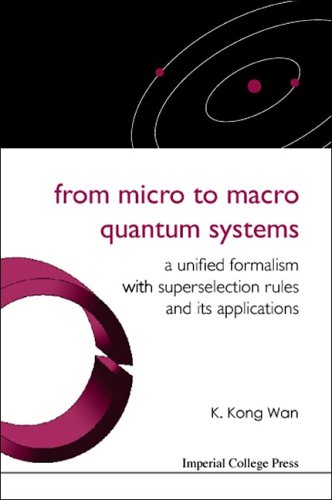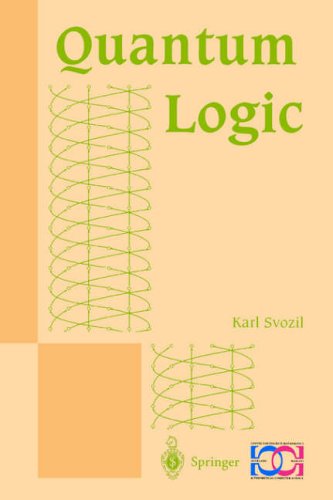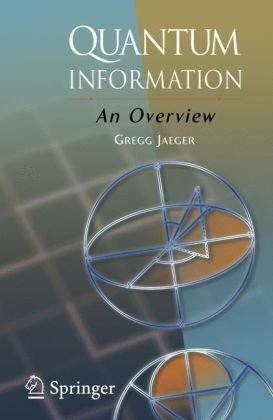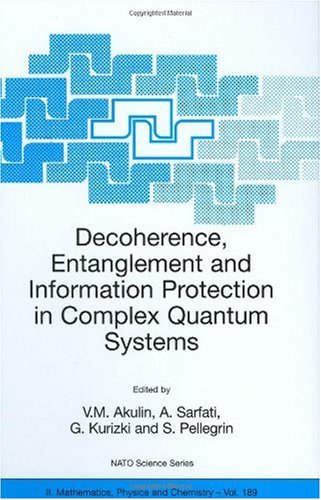K. Kong Wan9781860946257, 1-86094-625-9
Table of contents :
Contents……Page 12
Preface……Page 8
I Aspects of Geometric and Operator Theories……Page 21
1 Manifolds and Dynamical Systems……Page 23
1.1.1 Basic concepts and definitions……Page 24
1.1.2 Topological equivalence……Page 29
1.2.1 Basic concepts and definitions……Page 31
1.2.2 Coordinate systems and coordinate transformations……Page 33
1.2.3 Contravariant and covariant vectors in En……Page 35
1.2.4 Contravariant covariant and mixed tensors……Page 37
1.3 Differential Operators Vectors and Fields……Page 40
1.3.1 Differential operators and derivations……Page 41
1.3.2 Tangent vectors tangent vector fields and their integral curves……Page 46
1.3.3 Transformation groups and complete vector fields……Page 55
1.4 Cotangent Vectors and Differential Forms……Page 60
1.4.1 Cotangent vectors differentials and one-forms……Page 61
1.4.2 Tensor fields and two-forms……Page 67
1.4.3 Exterior differentiation……Page 71
1.4.4 Interior products closed and exact forms……Page 73
1.5.1 Definition and examples……Page 76
1.5.2 Riemannian manifolds……Page 80
1.5.3 Hamiltonian manifolds……Page 83
1.6.1 Classical systems of finite order……Page 87
1.6.2 First-order systems……Page 88
1.6.3 Second-order Hamiltonian systems……Page 89
1.6.4 Momentum observables vector fields and operators……Page 93
1.6.5 Concluding remarks……Page 97
References……Page 98
2.1 Hilbert Spaces……Page 101
2.2.1 Boundedness adjoints extensions and restrictions continuity and closure……Page 107
2.2.2 Convergence of a family of bounded operators……Page 112
2.2.3 Tensor products of Hilbert spaces and operators……Page 114
2.3 Types of Operators and their Reductions……Page 117
2.4 Unitary Operators and Unitary Transforms……Page 127
2.5.1 Selfadjoint and maximal symmetric extensions……Page 133
2.5.2 Von Neumann’s formula for selfadjoint extensions……Page 148
2.6 Probability and Expectation Values……Page 150
2.6.1 Borel sets measures and measurable functions……Page 152
2.6.2 Probability measures and probability functions……Page 157
2.6.3 Expectation values variances and uncertainties……Page 160
2.7 Spectral Measures and Probability……Page 162
2.8.1 Spectral theorem……Page 168
2.8.2 Functions of a selfadjoint operator……Page 174
2.8.3 Spectra of selfadjoint operators……Page 177
2.8.4 Spectral representation spaces and spectral representations of selfadjoint operators……Page 181
2.9 Generalized Spectral Measures and Probability……Page 187
2.10.1 Symmetric operators and their spectral functions……Page 190
2.10.2 Strictly maximal symmetric operators and their spectral functions……Page 193
2.10.3 The square of maximal symmetric operators……Page 195
2.10.4 Spectra of symmetric operators……Page 198
2.11.1 Probability measures spectral measures and selfadjoint operators……Page 200
2.11.2 Probability measures generalized spectral measures and strictly maximal symmetric operators……Page 203
2.12.1 Definitions……Page 205
2.12.2 Localization of bounded operators……Page 207
2.12.3 Local operator algebras……Page 208
2.12.4 Localization of unbounded operators 1……Page 211
2.12.5 Localization of unbounded operators 2……Page 212
2.13 Direct Integrals of Hilbert Spaces……Page 215
2.13.1 Discrete composition of Hilbert spaces……Page 216
2.13.2 Continuous composition of Hilbert spaces……Page 218
2.14.1 Direct sums of operators……Page 229
2.14.2 Direct integrals of operators……Page 233
2.14.3 Density operators……Page 238
2.14.4 Statistical operators……Page 241
2.15.1 Direct integrals of tensor product Hilbert spaces……Page 244
2.15.2 Direct integrals and tensor product of operators……Page 245
References……Page 246
II Orthodox and Generalized Quantum Mechanics……Page 249
3.1.1 Structure of physical theories……Page 251
3.1.2 Mathematical framework of quantum mechanics……Page 254
3.2.1 Postulate on orthodox quantum statics……Page 256
3.2.2 Pure and mixed states……Page 259
3.2.3 Correlation between states……Page 266
3.2.4 Discretization of bounded and unbounded observables……Page 268
3.2.5 Approximate nature of measurements……Page 270
3.3.1 Preliminaries on quantization……Page 272
3.3.2 Failure of general schemes……Page 276
3.3.3 Complete momentum observables……Page 279
3.3.4 Observables linear in momenta……Page 289
3.3.5 Incomplete momentum observables……Page 292
3.3.6 Kinetic energy and the Hamiltonian……Page 295
3.3.7 Constraint and quantization in circuit geometry……Page 302
3.4.1 Postulate on orthodox quantum dynamics……Page 306
3.4.2 Asymptotic localization and separation: Free systems……Page 310
3.4.3 Asymptotic localization and separation: Scattering systems……Page 314
3.5.1 The problem……Page 320
3.5.2 Mathematical preliminaries……Page 322
3.5.3 Ideal particle source……Page 323
3.5.4 Random particle source……Page 325
3.5.5 Extension to spin-1/2 particles……Page 327
3.6.1 Local position observables and their measurability……Page 330
3.6.2 Reduction to local position measurements……Page 333
3.6.3 Spectral separation for spinless particles……Page 334
3.6.4 Spectral separation for spin-1/2 particles……Page 339
3.6.5 Local position measurement as an ionization process……Page 340
3.6.6 A model ionization propagator……Page 344
3.6.7 Projection postulate local position measurements and uncertainty relations……Page 348
3.6.8 Concluding remarks……Page 349
References……Page 351
4.1 Introduction……Page 357
4.2 Unified Statics in Direct Integral Space……Page 358
4.2.2 Discrete and continuous direct integral decompositions……Page 359
4.3.1 Regular and singular states pure and mixed states……Page 361
4.3.2 Coherence and superposition principle……Page 364
4.3.3 Superselection rules their origins and classical observables……Page 365
4.4.1 Preliminaries……Page 371
4.4.2 Preserving dynamics……Page 372
4.4.3 Non-preserving dynamics 1: Motivation……Page 376
4.4.4 Linear functionals for state description……Page 378
4.4.5 Extensions and restrictions of linear functionals……Page 381
4.4.6 Non-preserving dynamics 2: A general scheme……Page 384
4.4.7 Non-preserving evolution and environments……Page 387
4.5.1 First-order systems in Hilbert space……Page 388
4.5.2 Second-order Hamiltonian systems in Hilbert space……Page 393
4.6.1 A model system……Page 398
4.6.2 Classification of physical systems……Page 399
4.6.3 Quantum/Classical divide 1……Page 401
4.6.4 Equilibrium and mixed quantum systems……Page 403
4.7.1 Measuring devices……Page 404
4.7.2 Coupling of orthodox quantum and classical systems……Page 405
4.7.3 Coupling of orthodox and mixed quantum systems……Page 408
4.8 Concluding Remarks……Page 410
References……Page 412
5.1 Introduction……Page 415
5.2.1 Observables: Concept and description……Page 420
5.2.2 Measurement of intrinsically unsharp observables……Page 426
5.3.1 Approximate observables……Page 427
5.3.2 Related family of observables……Page 428
5.5 Time Operators and Uncertainty Relation……Page 429
5.6.1 Expectation values in terms of local values……Page 433
5.6.2 Local values and semi-local observables……Page 435
5.6.3 Local values in generalized phase space……Page 438
5.7 Appendix on Maximal Probability Families……Page 440
5.8 Appendix on Time Operators……Page 443
5.9 Concluding Remarks……Page 445
References……Page 446
III Point Interactions Macroscopic Quantum Systems and Superselection Rules……Page 449
6.1 Introduction……Page 451
6.2 Extensions of Symmetric Operators……Page 453
6.3.1 Direct sums and their selfadjoint extensions……Page 455
6.3.2 Selfadjoint extensions in terms of boundary conditions……Page 459
6.4 Quantization by Parts and Point Interactions……Page 463
6.5 Classification of Point Interactions in E……Page 466
6.5.1 Type 1 (BC1): The step potential……Page 470
6.5.2 Type 2 (BC2): 8-interaction as high-pass filters……Page 471
6.5.3 Type 3 (BC3): 8′-interaction as low-pass filters……Page 475
6.5.4 Type 4 (BC4): Perfect reflector……Page 483
6.5.6 Type 6 (BC6): Open end……Page 484
6.5.7 Type 7 (BC7): Ideal n-phase shifters……Page 485
6.5.8 Type 8 (BC8): High-pass n-phase shifters……Page 487
6.5.9 Type 9 (BC9): Low-pass n-phase shifters……Page 489
6.5.10 Type 10 (BC10): Ideal mid-pass 1/2n-phase shifters……Page 491
6.5.11 Type 11 (BC11): Partial mid-pass filter……Page 493
6.5.12 Type 12 (BC12): Ideal tunable phase shifters……Page 496
6.6 Remarks on Quantization by Parts……Page 498
6.7.1 Charged particles constrained to move in a circle……Page 500
6.7.2 Charged particles in 3-dimensions……Page 506
6.8 Point Interactions in a Circle……Page 509
6.8.1 Momentum operators……Page 510
6.8.2 Hamiltonians with reflection symmetry……Page 511
6.9.2 Type 2 (BCC2): 8-interaction……Page 515
6.9.3 Type 3 (BCC3): 8′-interaction……Page 517
6.9.5 Type 5 (BCC5): Elastic reflector……Page 518
6.9.6 Type 6 (BCC6): Open end……Page 519
6.9.8 Type 8 (BCC8): Static n-phase shifter……Page 520
6.9.9 Type 9 (BCC9): Gradient n-phase shifter……Page 521
6.9.10 Type 10 (BCC10): Ideal 1/2n-phase shifter……Page 522
6.9.11 Type 11 (BCC11): Static junction correlator……Page 523
6.9.12 Type 12 (BCC12): Ideal tunable phase shifters……Page 524
6.10 Current and Stationary States in a Circle……Page 525
References……Page 526
7.1 Single-Particle Representation……Page 529
7.2 Macroscopic Wave Function Hypothesis……Page 532
7.3.1 Physical properties……Page 533
7.3.2 Superconducting rings: Preliminaries……Page 534
7.3.3 Superconducting rings as equilibrium mixed quantum systems……Page 540
7.4.1 Josephson junction and dc Josephson effect……Page 542
7.4.2 Supercurrent and magnetic flux operators……Page 544
7.4.3 The Hamiltonian: Preliminary results……Page 545
7.4.4 Superconducting ring with a Josephson junction as an equilibrium mixed quantum system……Page 548
7.4.6 Superconducting ring with a 1/2n-junction……Page 550
7.4.7 Superconducting ring with a Josephson junction in an external magnetic field……Page 551
7.5 Feynman’s Derivation of Josephson’s Equation……Page 553
7.6.2 Momentum and supercurrent operators……Page 555
7.6.4 Hamiltonian operator 2: 1/2n-junction……Page 556
7.6.5 Hamiltonian operator 3: Josephson junction……Page 557
7.6.6 Superconducting wire with a Josephson junction as a mixed equilibrium quantum system……Page 559
7.7.1 Momentum and supercurrent operators: Special cases……Page 562
7.7.3 Physics of strictly maximal symmetric operators……Page 564
7.7.4 Momentum and supercurrent operators: General cases……Page 565
7.7.6 Correlation……Page 567
7.7.7 Superselection rules……Page 568
7.7.8 Condensate in a pure or in a mixed state……Page 569
7.8 Continuous Y-Shape Circuit……Page 571
7.9 Superconducting Quantum Interference Devices……Page 572
7.10 Non-Equilibrium Mixed Quantum System……Page 574
7.11 BCS Theory and Superselection Rules……Page 578
7.12.2 Y-shape circuits equilibrium mixed quantum systems and non-locality……Page 582
7.12.3 Equilibrium states globalization and non-locality……Page 586
7.12.4 Quantum/Classical divide 2……Page 588
7.13 Orthodox Quantum Systems……Page 589
7.14 Prospects and Other Approaches……Page 593
References……Page 595
IV Asymptotic Disjointness Asymptotic Separability Quantum Mechanics on Path Space and Superselection Rules……Page 599
8.1 Introduction……Page 601
8.2.1 Scattering systems……Page 606
8.2.2 de Broglie paradox……Page 607
8.3.1 Classical-like states……Page 609
8.3.2 Classical cats and their states……Page 612
8.3.3 Quantum cats and their state……Page 613
8.3.4 Disjointness and Schrodinger’s cat states……Page 614
8.3.6 Quantized oscillator and Schrodinger’s cat states……Page 615
8.3.7 Weak Schrodinger’s cat states……Page 617
8.3.8 Periodic Schrodinger’s cat states……Page 619
8.3.9 Double-well potentials and chiral molecules……Page 621
8.3.10 Dynamic and asymptotic decoherence……Page 627
8.4.1 Breakdown of superselection rules and capacitive junction……Page 628
8.4.2 Schrodinger’s cat states in superconducting systems……Page 638
8.5.2 Asymptotically separable quantum mechanics……Page 640
8.6 Entanglement and Decoherence……Page 642
8.6.1 Distinguishable particles……Page 643
8.6.2 Identical Fermions and Pauli exclusion principle……Page 646
8.7.1 The concept of chronological disordering……Page 649
8.7.2 Two-particle correlation and conservation laws……Page 650
References……Page 653
9.1 Introduction……Page 657
9.2 Physical Space and Path Space……Page 658
9.3 Functions on Path Space……Page 664
9.4.1 Hilbert spaces Hy (II(C)) on path space II(C)……Page 669
9.4.2 Comparing Hy (II(C)) and L2(Cc)……Page 671
9.4.4 Momentum operators in Hy (II(C))……Page 674
9.5 Josephson Effect and Superselection Rules……Page 675
References……Page 677
Bibliography……Page 679
Index……Page 695







Reviews
There are no reviews yet.